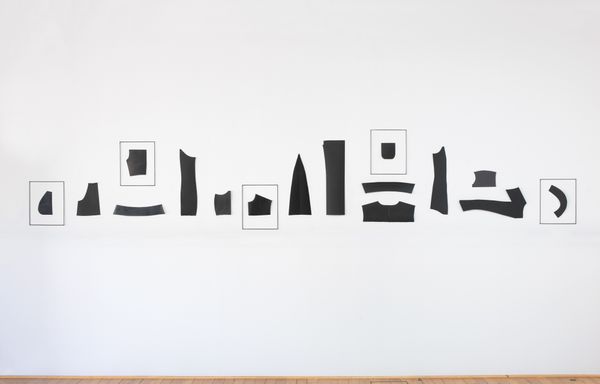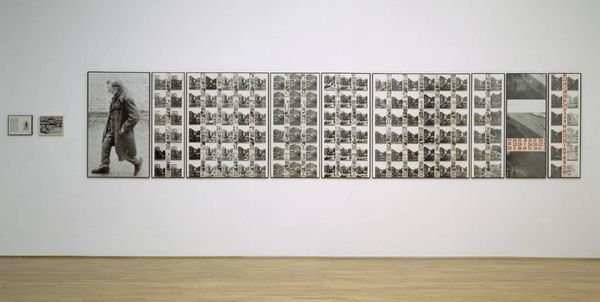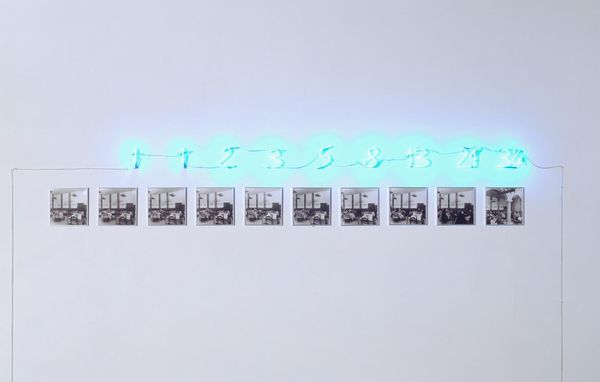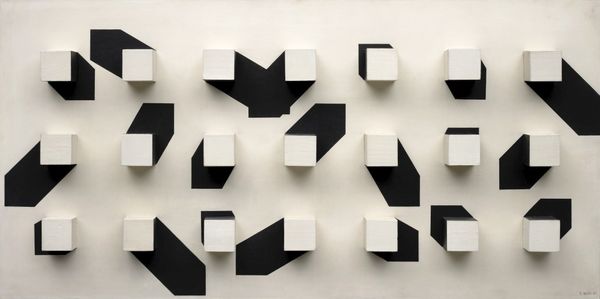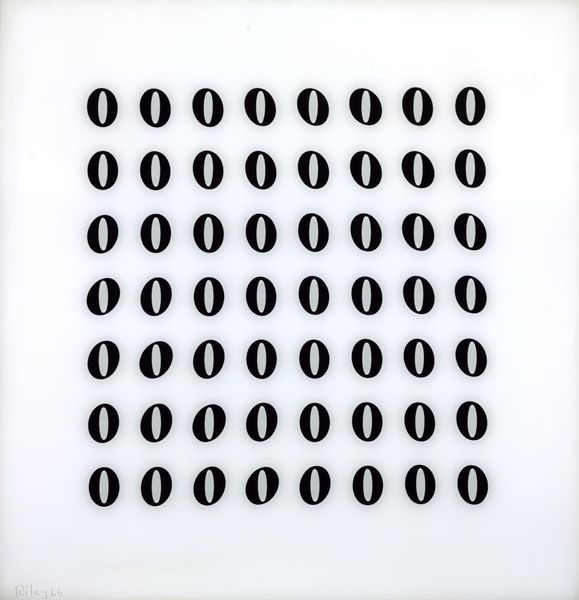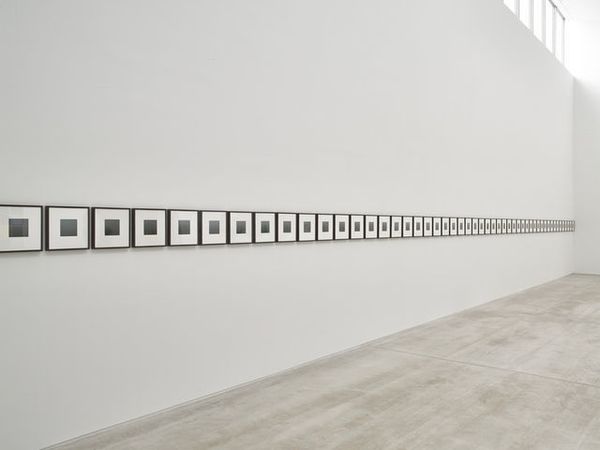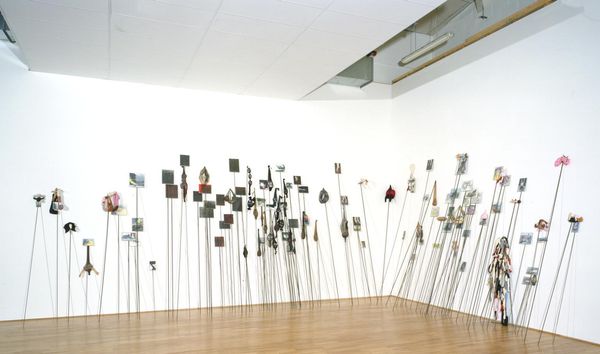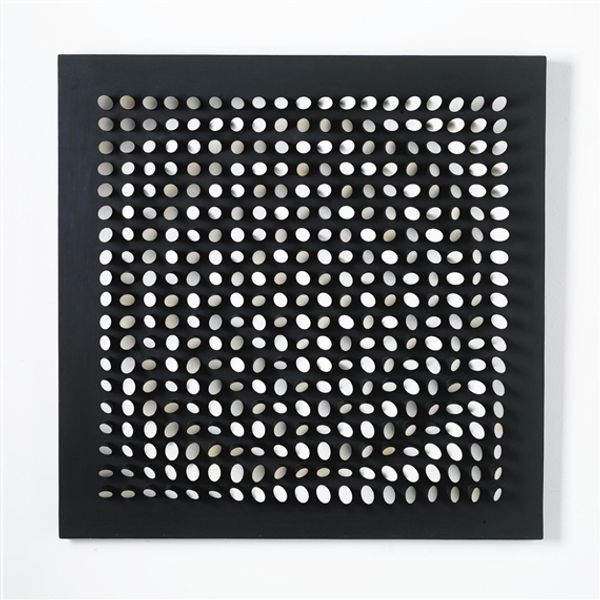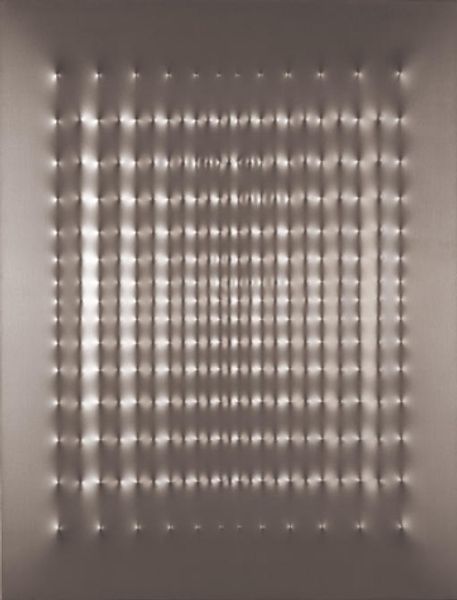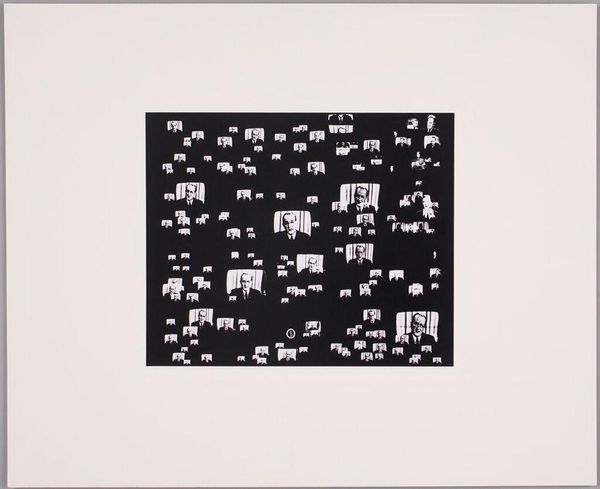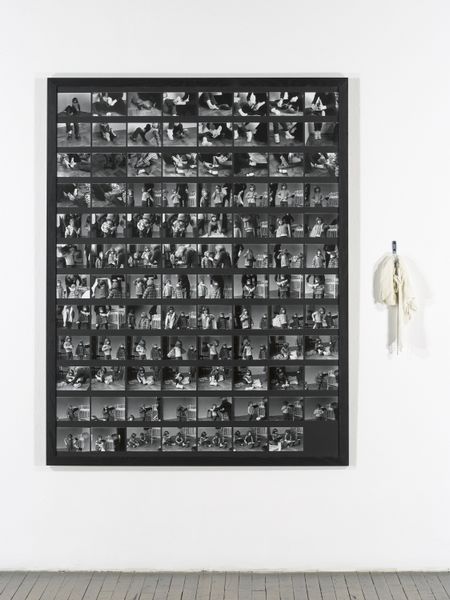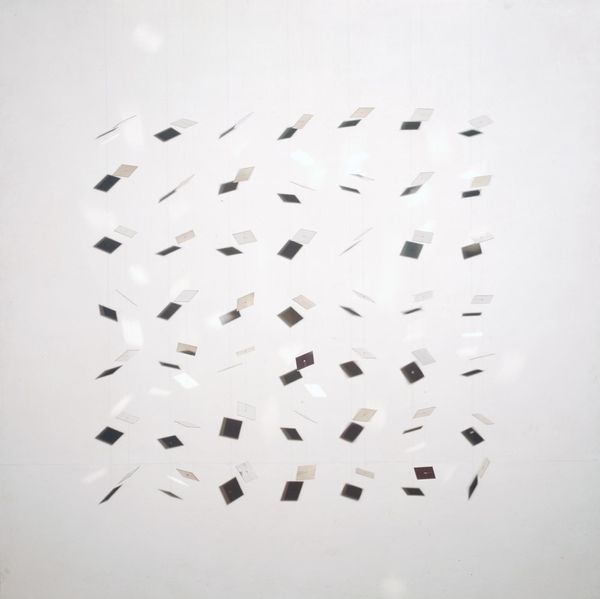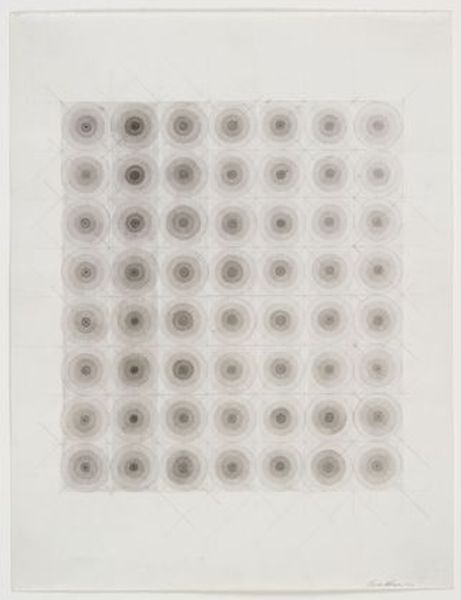
Copyright: Lorna Simpson,Fair Use
Curator: Lorna Simpson's piece, "Photo Booth," from 2008 is quite striking. It’s a mixed-media installation comprising vintage black and white portraits, meticulously arranged. Editor: It hits me immediately as ghostly. Like snippets of memories scattered across a white wall. Individually framed and yet somehow still unanchored. Curator: The individual portraits are so fascinating. Each photo tells a little story, doesn’t it? Editor: Absolutely. And when viewed collectively, they whisper something about the materials, too – the aging of the paper, the craftsmanship of those simple frames. These are clearly objects someone once cherished, probably machine produced for their accessibility, but valued deeply nonetheless. What statement is she making by isolating, and displaying them this way? Curator: Simpson's known for exploring themes of identity, gender, race and memory, particularly within the African American experience. The scattering effect, perhaps, mimics how memory itself functions – fragmented, nonlinear. Editor: Interesting. I am considering how photographic images have always had a place at the table of justice. There’s an inherent truth about this piece from that stand point too. The grid-like dispersion feels almost clinical in its assessment. A sort of critical reflection that leaves so much of the real image unseen. Curator: Clinical is an interesting observation, given the way the arrangement suggests connection without explicitly revealing it. Perhaps Simpson challenges us to look beyond the individual image, and find the larger social and cultural narratives embedded within these portraits. The viewer needs to lean in close, examine the images with patience, but keep a distance to see its broader impact. Editor: Yes! The very act of mass-producing these images— the paper, the darkroom chemicals, the printing— they were available to almost everyone, yet access didn't guarantee representation or control over one’s own narrative. What happens when a machine image from our family portrait is presented in an art exhibition? Who truly has access in those cases? Curator: A lovely tension. “Photo Booth” becomes this meditation on loss and history, where familiar faces hint at larger social inequalities, hidden power structures, and our fragile place in time. I love how she teases us to think bigger and deeper. Editor: Me too, each material piece serves as a starting point, beckoning us to unravel and re-weave the grand fabric of time. A thoughtful exhibit indeed.
Comments
No comments
Be the first to comment and join the conversation on the ultimate creative platform.
